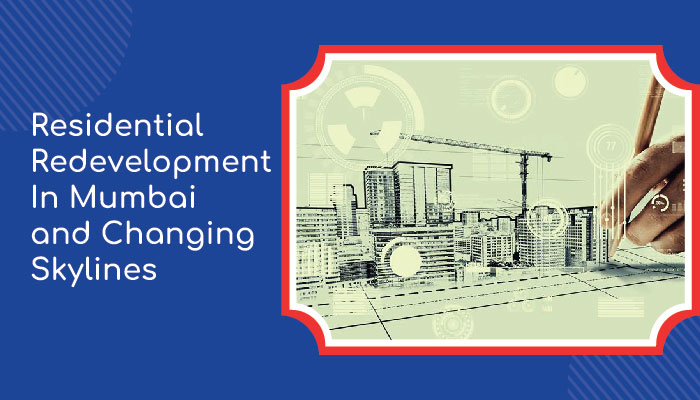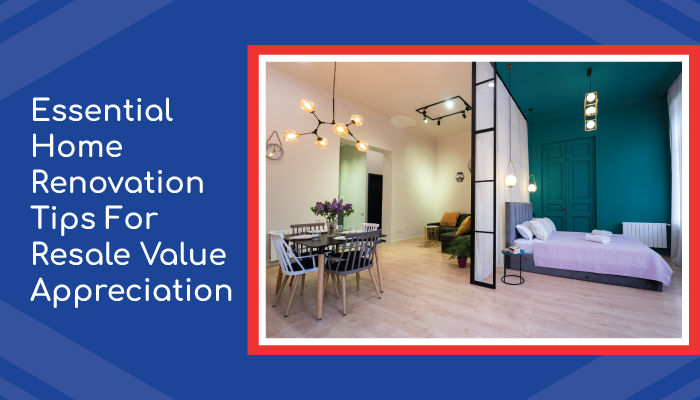Introduction
Mumbai, a highly congested and land-crunchy city, is undergoing critical urban makeovers. Due to the absence of new construction opportunities, redevelopment of old buildings is becoming increasingly popular, where the old, low-rise buildings are being demolished and new, modern skyscrapers are being constructed. This change is not merely transforming the physical dynamics of the city, but also reshaping the investment and outlook perspective of Mumbai.
This blog explores the reasons behind the redevelopment of old buildings, the impact it is having on the skyline, and its implications for residents, investors, and the city as a whole.
Do you want to Upgrade Your Residential Property Seamlessly?
Explore customized redevelopment solutions in Mumbai designed to maximize comfort, aesthetics, and investment potential. Connect with our experts today!
A] Why Is Residential Redevelopment Essential in Mumbai?
Mumbai also, known as the financial and cultural capital, is trying to cope with a serious lack of space and an ever-increasing population. Due to a shortage of land and old buildings, and an escalating demand for houses, residential redevelopment has emerged as an important tool towards urban renewal. This change is not only imperative but a tactical approach to enhance the living standard, land efficiency, and infrastructural modernisation, overall citywide. Here is an overview of why Mumbai old housing redevelopment is essential:
1. Limited Land Availability
The geographic limits of Mumbai (the city is surrounded by the sea on three sides) do not offer much horizontal growth. The only solution is the redevelopment of buildings in Mumbai through innovative measures to put in their place taller, higher-density buildings to provide more housing without encroaching on newer land.
2. High Demand For Housing
With an increase in the population of people moving to Mumbai to work and to seek opportunities, there is a soaring demand for houses. Redevelopment can contribute to this need by increasing the housing supply in existing neighborhoods, decreasing development pressure in areas around the urban fringe, and limiting uncontrolled urban sprawl.
3. Ageing Infrastructure
Most of the old buildings in Mumbai, particularly the old parts of the city, such as South Mumbai and the suburbs, are more than 40-50 years old and are weak. Redevelopment will eliminate these vulnerable buildings and replace them with high-quality, resilient structures that meet current standards for resistance to hazards and maintain habitable conditions in the long term, even in the face of disasters.
4. Boosting Property Value
The redevelopment of old buildings revitalises properties. The improved amenities and infrastructure of redeveloped buildings result in a soaring rise in the value of properties, which is beneficial for homeowners and the housing societies.
5. Lifestyle Upgrades
Redevelopment of old buildings in Mumbai introduces modern facilities, including parking, a fitness center, green areas, and security systems, which are rarely found in old buildings. This transformation significantly improves the living standards of people and brings Mumbai’s housing in line with global urban living standards.
B] Government Support & Policies Promoting Redevelopment in Mumbai
The Maharashtra government has been quite supportive in promoting residential redevelopment projects in Mumbai through different policies and regulatory incentives. Some of the major programs include the Development Control and Promotion Regulation (DCPR 2034), which provides more Floor Space Index (FSI) for redevelopment, making it more feasible.
Other schemes, such as the cluster development model and the incentives in redevelopment of the cess buildings, chawls, and the slums, also promote urban renewal. Additionally, a single-window clearance system has been established, ensuring streamlined processes to minimise bureaucracy. These are some of the key initiatives taken by the Government to modernise outdated infrastructure, upgrade housing stock, and provide the increased population of the country with sustainable, controlled redevelopment of the city.
C] How Does Residential Redevelopment Benefit Mumbai Investors?
Redevelopment in Mumbai housing societies offers a promising investment opportunity for investors. The construction of modern high-rise buildings, replacing old and run-down houses and buildings, not only improves living conditions but also significantly increases property value in the long term. Such redeveloped properties typically feature enhanced amenities, improved safety, and modern design, offering a superior living experience and attracting tenants.
Further, there is constant infrastructure development comprising new metro systems, motorways, and access to the facilities, which enhances long-term appreciation prospects. With redevelopment activity turning around neighbourhoods, it adds value to the overall quality of living and makes the city more appealing for owners and renters.
To investors, it offers increased returns, reduced chances of vacancy, and involvement in the larger economic and urban development of Mumbai. Redevelopment of buildings in Mumbai is not just a project for investors; it’s a lifetime opportunity to ensure huge ROI.
D] Common Challenges of Urban Redevelopment
Urban redevelopment in Mumbai has a number of challenges. It includes the fact that there is less occupied land in areas that are densely populated, hence it is not easy to undergo large-scale urban redevelopment projects. There are also environmental issues that adversely affect the development. Also, obtaining sufficient funding and regulatory permits tends to limit the redevelopment process both in terms of schedule and feasibility.
Get in Touch With Our Experts
Our team is here to guide you — reach out today for quick assistance.
Conclusion
Mumbai’s old building redevelopment is redefining the urban identity of Mumbai by demolishing ageing buildings with the new high-rise modern buildings. With the growing demand and scant land with crippling infrastructure, redevelopment in the city has become a requisite for sustainable growth. This transformation will provide people with better living conditions and investors with better returns, which is supported by the government’s policies and the growing infrastructure.
With the modernisation of the city, real estate developers in Mumbai have a strategic opportunity. This can offer a feasible and profitable opportunity for investors to contribute to the city’s development and ensure high future returns. Redevelopment of the city is not about demolishing the old structure and building a new one; it’s all about offering high-quality livelihoods, better living spaces, and a quality of life to the people.

Harsh Gupta
Harsh Gupta is a visionary architect based in Mumbai, dedicated to crafting homes that blend elegance, functionality, and modern living. As the Founder and CEO of Harsh Group, he brings over a decade of expertise in delivering high-quality residential projects across the city. Known for his commitment to timely delivery, transparency, and client satisfaction, he ensures every project reflects his passion for creating vibrant communities. His innovative designs and unwavering integrity have earned him the trust of countless homeowners, making Harsh Group a trusted name in redefining urban living in Mumbai.



